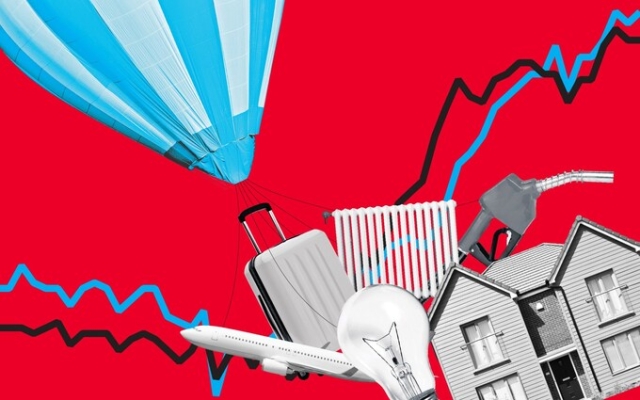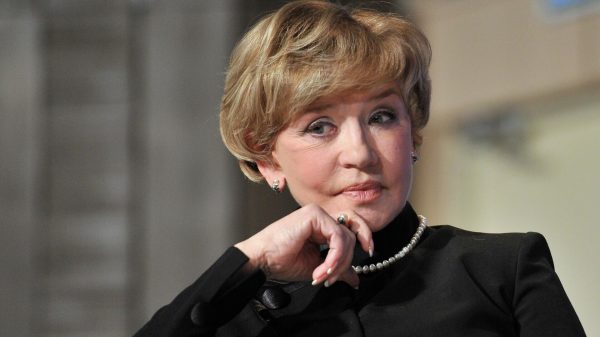
Families are cutting their budgets as the cost of living is falling. But there's one thing that many aren't ready to give up just yet: summer vacation.
Airlines, including easyJet and British Airways, are either making profits or making higher profits amid the travel boom. This has led to an increase in travel spending, forcing holidaymakers to spend money even as headline inflation fell to 6.8 percent in the year to July.
According to the Office for National Statistics (ONS), in In July, airfare rose nearly 30% year-over-year, while ferry tickets rose 14.4%.
Spending at restaurants and hotels also rose by nearly double digits. leading to an increase in headline service inflation to 7.4% pa by July 2023 from 7.2% in June.
These numbers are a headache for the Bank of England, which already warned this month that service sector inflation was likely to remain “elevated” until the end of this year.
Bank officials had expected the rate to rise to 7.3%, averaging 7% “ in the second half of 2023.”
Meanwhile, private sector rents are rising at the fastest pace since comparable records began on the back of strong tenant demand. , while insurance costs also skyrocketed. Average car insurance premiums increased by 50% compared to last year. Claims usually require replacement cars, which have become more expensive to rent, and the cost of repair materials such as paint and other tools has also skyrocketed.
1708 Stubborn inflation
This is important because the interest rate setting Committee on Monetary Policy (MPC) has identified services inflation as one of the main indicators of continued inflationary pressure. This is coupled with tight labor markets and runaway wage growth.
These three factors will help determine whether a fifteenth straight rate hike in September is warranted, with rates currently at 5.25%. So far, all signs point to new growth.
Matthew Swannell, an economist at BNP Paribas, said service prices are likely to remain «tight» in the coming months.
“Services are not only gaining momentum on an annualized basis, but the growth rate is still above the target stable pace,” he said. “This will only normalize as wage growth returns to a pace in line with the inflation target. This is likely to be a relatively gradual process as the labor market weakens.”
Food prices are now the most powerful everyday indicator of inflation for most households. Energy bills are down from peaks, but food prices continue to rise.
Overall, food prices rose 14.9% year-over-year in July. This is down from a peak of over 19% in March, but remains painfully high.
According to the Resolution Foundation, the average household's annual groceries bill has risen by £960 since 2019-2020, more than a typical increase in energy prices of £910.
Some individual products are growing at an incredible rate. Sugar costs almost 55 percent more than a year ago. Olive oil, fueled in part by a drought in Spain, has risen in price by more than 40%. Eggs are now worth a quarter as much as they were a year ago.
But the rise in prices of most products is slowing down, and some have even fallen in price between June and July.
The cost of milk and butter is lower in July than in the previous month as the pressure on the dairy markets eases. Potatoes also fell this month, as did cereals.
But dangers remain, warns Helen Dickinson, chief executive of the British Retail Consortium.
“Russia’s withdrawal from the Black Sea Grain Initiative and subsequent blows on Ukrainian grain enterprises, as well as restrictions on rice exports, could put pressure on some global commodity prices, which slows down the fall in food prices,” she says.
1807 wage prices
Looking at the bigger picture, the decline in headline inflation in July is welcome, but unlikely to repeat. Last month, the energy price cap dropped significantly to £2,074 from £2,500 in the winter.
Consulting firm Cornwall Insight expects the price cap for a typical direct debit dual-fuel consumer to drop to £1,860. in October before rising to £1958.81 the following January. In other words, the massive reduction in energy bills is behind us.
Rishi Sunak remains hopeful that he will meet his goal of halving inflation, insisting on Wednesday that «if we stick to the plan I set out, we'll do it.»
However, the Institute for Financial Studies (IFS) think tank warned that the prime minister's promise could still be «at risk» due to persistently high service prices, as well as high so-called «core» inflation, which eliminates unsustainable fluctuations. food prices. and energy.
“With only four months left, it no longer seems entirely clear that inflation will fall enough at the end of the year to achieve this.”
But, according to Sunak himself, there is also a «light at the end of the tunnel» with glimmers of hope coming from UK manufacturers.
Plant costs have skyrocketed in the past year, reaching levels not seen since the ONS began keeping records in the 1980s. The costs were quickly passed on to customers—factory prices have risen by the highest since 1977.
But with lower energy bills and the end of many disruptions to supply chains in the pandemic era, costs are now falling.
Producer spending on goods production fell 3.3% year-on-year through July, driven by falling prices for oil and petroleum products. Product prices charged to customers fell by 0.8%.
Such a massive drop has not been seen since 2020.
Manufacturers' customers are often other companies, whether they are factories where their products are further processed or retailers.
This means that prices should be declining, and ONS expects them to hit store shelves around the end of the year.
There is hope on the international front as well. Inflation in the UK has proved painfully resilient compared to other rich economies.
1808 ppi
UK prices continue to rise faster than anywhere else in the G7. According to Eurostat, inflation in Germany is 6.5%, while price growth in Italy is only slightly slower at 6.4%, and in the US, annual price growth is 3.2%.
Although there is no direct correlation, the ONS notes that in terms of the peak of inflation and subsequent fall, the UK lags behind the US by about four months.
Although the situation is not identical — the US has avoided a hike in energy prices in the UK and Europe — the tight labor market in the UK bears some similarities to that in the US, which gives hope that price pressures will indeed ease over time.
While factory-gate prices may now be falling, the Bank of England's inflation headache is far from gone.
Sanjay Raja, chief economist at Deutsche Bank in the UK, says the current dilemma facing policymakers is not will they raise interest rates, but by how much.
Another set of inflation and wage data will be released before the MPC decides. Raja, like the Bank, believes that inflation will again exceed 7% in August «for two reasons.» He explains: “Firstly, duties on alcohol will increase significantly. And secondly, pump prices are likely to rise significantly after eight months of decline.”
Raja says that if wage growth continues to rise at close to 8% and service sector inflation remains above 7%, «the odds could change a lot.» before a half-point increase in September.»






















































Свежие комментарии